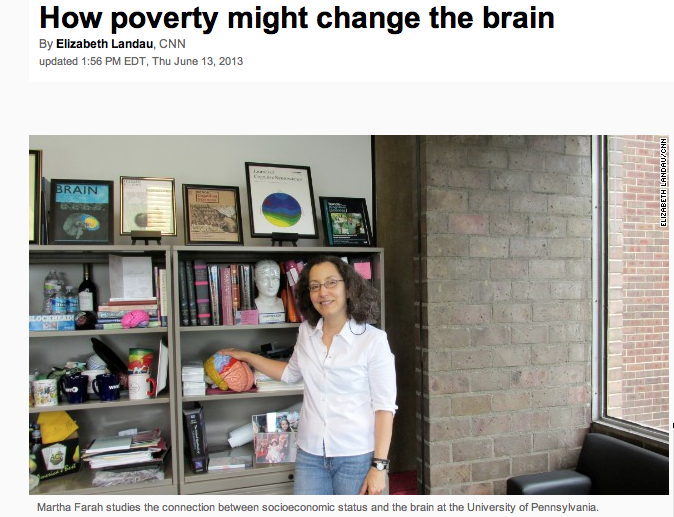
Across the Penn campus in the radiology department, Farah sits in a low chair while Brian Avants, assistant professor of radiology, explains their recent study, using a slide on a computer screen. Farah presented the study at the Society for Neuroscience meeting in November.
Researchers followed 53 children who came from low socioeconomic status from birth through adolescence. This is a relatively small number of participants, but it is typical for brain imaging studies.
Participants were evaluated on two scales: Environmental stimulation — such as “child has toys that teach color” at age 4, and “child has access to at least 10 appropriate books” at age 8 — and parental nurturing, such as “parent holds child close 10-15 minutes per day” at age 4, and “parents set limits for child and generally enforce them” at age 8.
Researchers looked at whether cortical thickness in young adulthood could be predicted by the earlier environmental stimulation and parental nurturing measurements. Greater cortical thickness in childhood is associated with poor outcomes such as autism, Avants explained. Later in adolescence, relatively reduced cortical thickness is linked to higher IQ and other mental processes.
http://www.cnn.com/2013/06/13/health/martha-farah-brain
